Enjoy Winter: White-tailed Deer
by Tim Burris, Mariton Preserve Manager
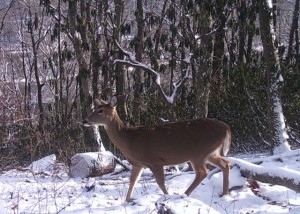
White-tailed deer (Odocoileus virginianus) stay active throughout the winter and have pretty big energy requirements. So, what adaptations do they have to make it through the cold, famine months?
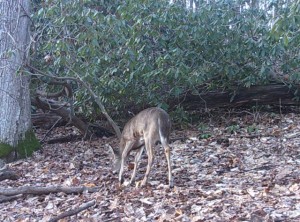
Like most wintering animals, bulking up during the fall is the first line of preparation. Acorns and other nuts, wild fruits, agricultural crops, and the last of the greenery need to be consumed during the fall so that deer can attain fat that will be instrumental for survival during a harsh winter. While deer can reduce food intake during the winter, they still need to consume a couple pounds of browse daily. During the winter, deer often feed on twigs, buds, evergreen needles, and even dried leaves. All of these things have very low nutrition, but fortunately deer have compound stomachs that can squeeze out just about every available calorie.
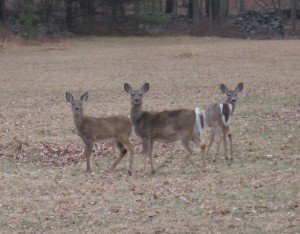
Still, deer can’t find enough calories in the winter to keep their bodies warm. So they develop winter coats. In September, a deer’s dull brow-gray winter coat replaces its red summer coat. This winter coat is highly insulated with hollow hairs to add more warmth. You can easily feel the difference when you compare a summer and a winter deer pelt. You can see the difference if you ever find a deer bedded during a snowfall. A mantle of snow will build up on the deer’s body. That snow would melt if there was much heat loss from the deer’s body.
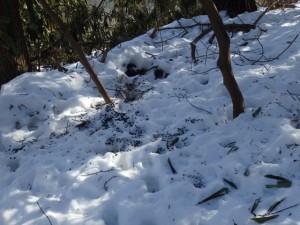
Deer also conserve heat by seeking shelter in evergreen thickets where they are shielded by the wind and where the vegetation acts like a blanket. I often think of the cedar swamps and spruce thickets of the Adirondacks and northern states. Mariton Wildlife Sanctuary has limited spruce and pine groves, but there is an extensive labyrinth of rhododendron on the steep slopes overlooking the Delaware River. In the photo above, you can see by the amount of droppings and tracks that a few deer spent several days in this patch of rhododendrons. Not only does this provide thermal cover, but it is an area largely inaccessible to people, so deer can stay there for long periods without disruptions that would burn valuable calories. (One more reason why dog owners should keep their pets leashed, please.)
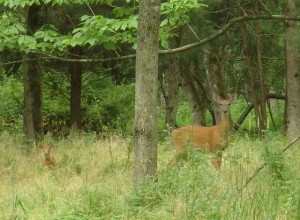
Even with their adaptations, it is a wonder that deer can survive harsh winters like we had last year. So, it is dumbfounding to me that during these cold, famine months a baby (or two, or three) is developing in the womb of almost every doe in our woods! The breeding season is in the fall (the reason for so many deer are struck by cars in October and November). It is important that deer be born in May and June (seven-month gestation) so that there is an abundance of greenery for does to convert into milk. During the summer lushness fawns can grow quickly, and they will need all the bulk they can get to weather next winter.
